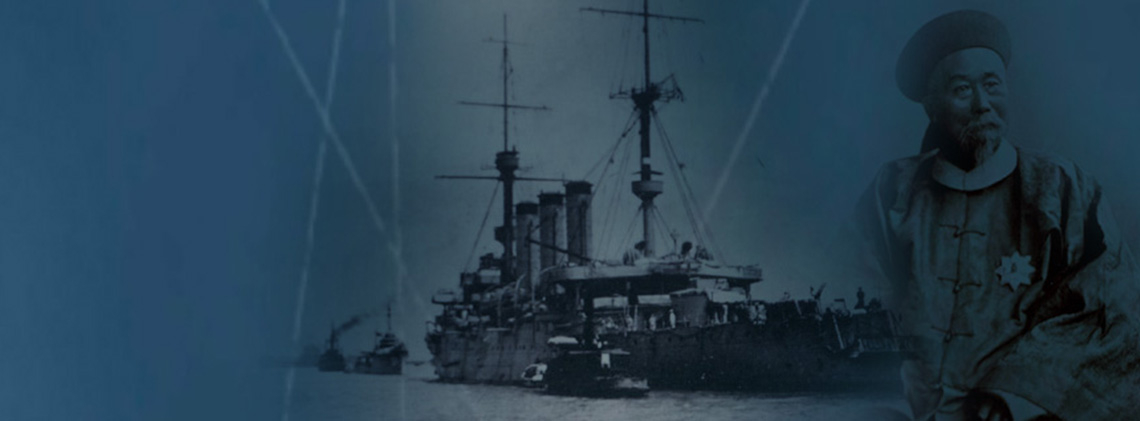
First Sino-Japanese War
Splendid
Chi Culture
Topic
First Sino-Japanese War
The First Sino-Japanese War occurred at the end of the nineteenth century when Japan invaded China and Korea. The war broke out in 1894, the year Jiawu according to the traditional Chinese calendar, and is therefore known in China as the War of Jiawu (known as the Japan-Qing War in Japan and as the First Sino-Japanese War in Western countries).
The Meiji Restoration began in 1868 and from the start the Japanese government established a policy of territorial expansion with China as its main goal. In 1874, Japan invaded Taiwan and established the governor-general office. After extorting 500,000 taels of silver from the Qing government, Japan withdrew its troops from the island. In 1879, Japan forcibly annexed Liuqiu (Ryukyu), one of China’s tributary states, and renamed it Okinawa.
In 1887, the Japanese Chiefs of Staff formulated military strategies against the Qing empire; these gradually developed into the Continental Policy centered on the invasion of China. The policy had five steps: the first was the occupation of Taiwan, the second the annexation of Korea, the third the invasion of Manchuria and Mongolia, the fourth the demolition of China, and the fifth the conquest of Asia and domination of the world. Japan desired to achieve the so-called “Hakkō ichiu” (literally “eight corners, one roof”). The naval defeat of China was a prerequisite for achieving the first two steps.
Meanwhile, the late Qing dynasty (late nineteenth century) was rife with corruption and the country was impoverished. The seemingly strong military defense was in fact fragile. The Westernization Movement, which lasted for decades and made certain achievements, failed to change the nation fundamentally.
On July 25, 1894, Japanese troops stationed at Seoul advanced into Asan, south of the city, while, at the same time, the Japanese navy attacked ships belonging to China’s Beiyang fleet near Pungdo. On August 1, 1894, the Guangxu emperor (r. 1875–1908) and the Japanese emperor each, successively issued a declaration of war.
The two countries fought the Battle of Pyongyang in Korea. Following the complete withdrawal of the defeated Qing troops on September 26, 1894, Japan fully occupied Korea.
Almost simultaneously, Chinese and Japanese navies engaged one another in the northern Yellow Sea. This has been known variously as the Battle of the Yellow Sea, the Sino-Japan Naval Battle, or the Battle of Dadonggou. China lost five warships and sustained more than a thousand casualties; Japan, on the other hand, suffered 5 damaged warships and over 600 casualties. To preserve China’s military power, Li Hongzhang (1823–1901), the commander of the fleet, ordered the Chinese Fleet to withdraw to Weihaiwei (present-day Weihai). This action effectively ended China’s control of the Yellow Sea.
From this point on, the war shifted to the Liaodong Peninsula. On October 24, Japan attacked the Qing army garrisoned on the north bank of the Yalu River and rapidly smashed their defenses. On the same day, Japan assaulted Lüshun (Port Arthur), famed as the First Fortress of East Asia. After capturing the port on November 21, the Japanese troops started the four-day Lüshun Massacre, during which more than 20,000 Chinese civilians were savagely slaughtered.
In 1895, the Japanese mobilized an army of 25,000 troops and attacked Weihaiwei, the base of the Beiyang Navy. Although the nearby Anhui Army was outnumbered by the Japanese troops, General Ding Ruchang held his ground firmly. However, within the Qing government a peace faction gained the upper hand while the Qing forces suffered one retreat after another. Ding Ruchang (1836–1895), Yang Yonglin (1854–1895), and other generals who refused to surrender committed suicide under the coercion of the dovish generals and foreign members of the navy. On March 17, Japanese troops landed on Liugong Island, off the coast of Weihaiwei. With the fall of the naval base, the entire Beiyang Fleet was annihilated.
Defeated in both land and sea battles, the Qing government was forced to negotiate peace with Japan. The two countries signed the Sino-Japan Peace Treaty, or Treaty of Shimonoseki, on April 17, 1895. By the terms of the treaty, China recognized the complete independence of Korea, ceded the Liaodong Peninsula, Taiwan, and all its affiliated islands to Japan; furthermore, they were forced to pay reparations of two hundred million taels of silver for Japan’s military expenditure, and to open ports for Japanese trade, among other demands.
The First Sino-Japanese War was China’s most disastrous military failure in the nineteenth century. The signing of the Treaty of Shimonoseki brought enormous harm and utter humiliation to China and set off the surge among Western powers to carve up China. The corruption of the Qing government was exposed to the public, which awakened the consciousness of the Chinese nation. By relying on military outbreaks, Japan grew into a militaristic country through rapid military and economic development, and became one of the principals of world war in the twentieth century.



